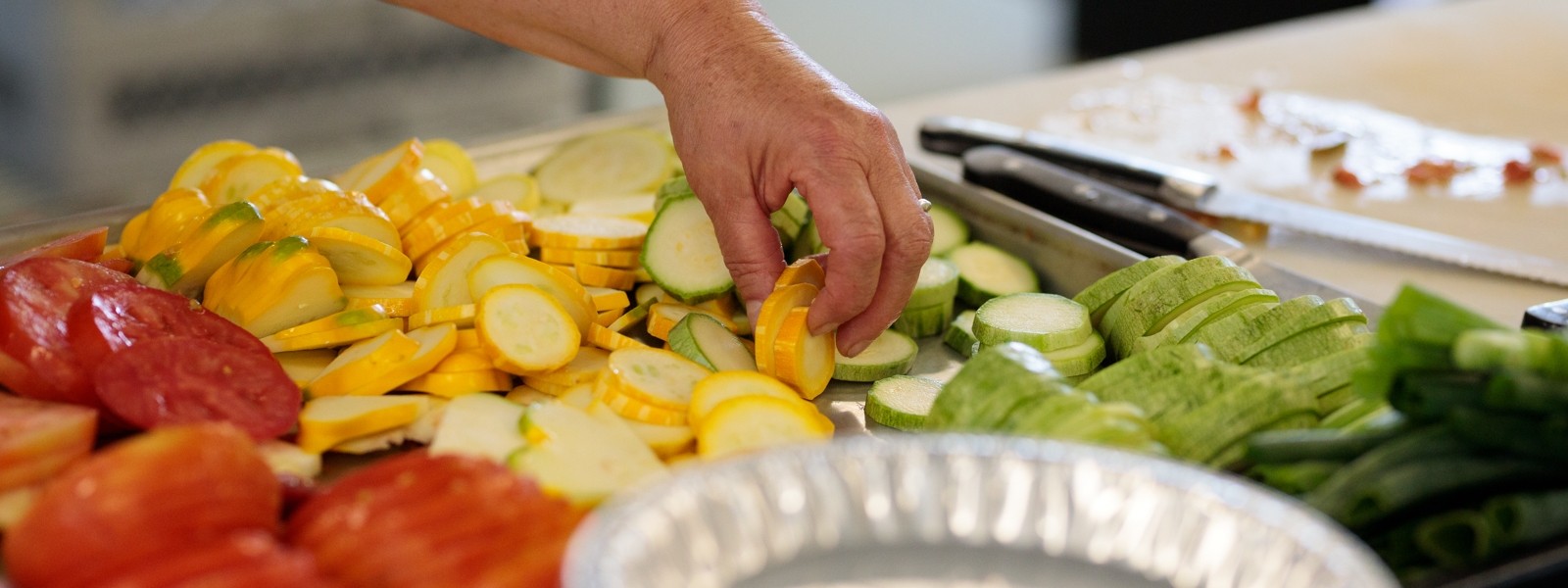Winter Squash: Cooking Tips
Squash makes fall and winter meals so sweet and colorful. Here are some cooking tips to help you get the most out of these abundant fruits!
Selecting Squash
There are many more types of winter squash than summer squash. Some more common varieties include pumpkin, acorn, butternut, buttercup, spaghetti, delicata, and carnival. All have slightly different colors, textures, and or flavors. They all cook the same way and can for the most part be readily interchanged in recipes.
If you will be eating your squash right away, the dented or bruised ones are fine. The small dents and bruises are purely cosmetic, the flavor is unaffected by them and you can often get a great price on squash that looks unattractive. Just cut out any bad spots when you’re prepping the squash and removing the seeds. If there are too many bruises to deal with, peel the squash with a potato peeler and cut it into chunks and cook it that way. If a squash feels soft it is ready for the compost bin.
To Peel or Not to Peel
It is easier to bake and then peel winter squash, rather than the other way around, as the roasting process lifts the skin off, which is otherwise quite tough to remove. If you are pressed for time and need that peel removed before baking, a sharp potato peeler should do the job. Many people eat the skin of delicata and butternut squash, others find it way too tough.
Cook It!
The mild, nutty, and sweet flavor spectrums of winter squash are quite adaptable in recipes. By using a little creativity with your spicing, you can turn squash into anything from sweet, to savory, to hot and spicy. You can create a whole range of food from soup to stuffed mushrooms to pumpkin smoothies with squash, so be a little experimental with this amazing, often locally grown, food.
Cooking Whole
Cut the squash in half, clean out the seeds with a spoon and place cut-side down on an oiled sheet pan or lasagna dish. Add about 1/4 inch of water to the pan and bake at 375 degrees for 45-50 minutes, or until you can easily poke through the squash with a fork. Once cooked, the flesh can be scooped out and pureed for use in a variety of recipes.
Cube It
Squash can be cut into pieces and steamed, bolied, or baked. If the squash skin is thin, like that of a delicata or even a butternut, you don’t have to peel it as long as you don’t mind the somewhat fibrous texture. Cut in to cubes, large or small, squash is a colorful addition to soups and stews, baked beans or chili. Steam, boil, or bake until the cubes are fork-tender. Try this Butternut Gratin.
Stuffed
A delicious way to prepare smaller squash like delicata, acorn, carnival or buttercup, is to roast it and then stuff it. Cat likes to mix a concoction of sauteed onions, garlic, apples, fresh sage, toasted pecans, maple syrup and brown rice and/or quinoa. You might end up with more filling than fits in the squash, but you can use that as a side dish for another time. Fill the baked squash cavity with the stuffing mixture and return the squash to the oven, cut side up, at 350 degrees for 20 minutes. Baked and stuffed squash is a great compliment to braised greens.
Puréed
Once steamed, baked, or boiled, puréed squash makes an excellent medium for sauce, soup, or even a delicious frosting for savory casseroles or sweet baked goods. Trying new recipes is fun! Try this for a sauce: Stuffing Pies with Sweet Squash Sauce, and this for a soup: [Butternut Bisque]https://cedarcirclefarm.org/recipes/entry/butternut-bisque.
Storing Squash
Once a squash fruit is cut open, you can wrap the unused portion in plastic and store in refrigerator for up to a week, or cut it into cubes and place in a freezer bag to freeze. You can freeze cooked or uncooked squash, but it is easier to use when it has been cooked and puréed first. You can freeze purée in 8 oz containers for use in flavoring oatmeal, to thicken a sauce or soup, or for baking; this size tends to be the perfect amount for a loaf of sweet bread. Larger containers of puree are great for stews, soups, sauces, pie fillings, casseroles, and even smoothies. Try frosting a casserole with squash and then topping that with a pecan, sage and onion crumble. Yum. Learn more about storing squash!
Keep those seeds!
You can roast the seeds of any kind of winter squash, the same as you would for pumpkin seeds. Clean the strings off by rinsing under running water, toss with 1-2 tsp of oil and season. Try seasoning them with salt, cumin, and chili powder. Tamari with a little wasabi powder is another yummy variation. Eat the seeds on their own, or as a garnish with Butternut Squash and Parsnip Bisque. Learn more about Saving Winter Squash Seed.
photos: CCF staff

